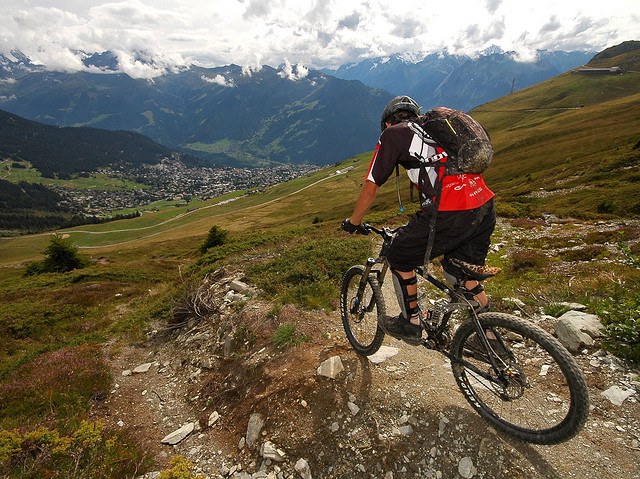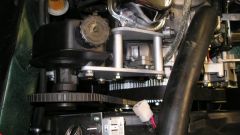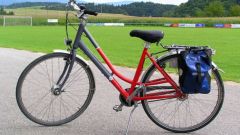Bike brakes from different manufacturers can have significant structural differences, but one principle unites them unconditionally: brake fluid should be done once a year, regardless of how good or bad working of the brake system.
If the cyclist spends a long time in the saddle and rides on terrain that require frequent, severe or sudden braking, it is possible that brake fluid replacement will be required even more frequently: every six months.
Visually determine the need for replacement fluid is easy: installing the brake lever parallel to the ground surface and by removing the surge tank cap, the cyclist can appreciate whether brake fluid impurities, has changed its color to see if it is cloudy. All the above factors indicate the need for oil changes.
To avoid contamination with oil fluid brake pads, we recommend that before replacing the oil, they should be removed from the bike. The wheels for the same reason, preferably something to cover.
Picking up fluid for the brake system of the Bicycle, it is important to follow the manufacturer's recommendations. Replace the original oil counterparts for braking of the vehicle is not: automotive oil may not match the parameters of viscosity, contain additives that are not suitable for bicycles.
In addition, automotive fluids can corrode the rubber seals, which will cause damage to the entire braking system of the bike.
Before you begin to self-replace brake fluid bike needs to think about a set of tools. They will need a bit: Phillips screwdriver wrench No. 7, hex keys set, container for draining the used oil, cut the plastic tubing and syringe (optional, but very convenient device for Gulf oil).
For draining the waste liquid to put the cut tube to the valve of the brake caliper (the caliper) and using a wrench to open it, pointing the free end of the tube into the drainage container.
Press on the brake lever helps drain the waste liquid. Making sure the liquid completely merged, it is possible to fill the hydraulic system with fresh oil.
To do this, use a medical syringe or manually need to fill the expansion tank to the brim, and repeatedly press the brake lever. The liquid will start to leave the hydraulic hose, squeezing out air bubbles. As you lower the liquid level in the tank, it needs a little top up to the tank was left completely empty.
When the hydraulic hose will be filled to overflowing, and the excess fluid will be expelled from the tube in the drainage container, the valve of the caliper can be closed.
The system should not contain air by pressing on the brake: soft and sluggish depression indicates the presence of air. In this case, the valve needs to open again and refill the brake fluid by pushing the brake lever until you feel a hard tap.
Tightly closing the valve in the brake caliper, and removing the tube, you need to top up the expansion reservoir to the top, then the reservoir cap can be spun.
If the cyclist spends a long time in the saddle and rides on terrain that require frequent, severe or sudden braking, it is possible that brake fluid replacement will be required even more frequently: every six months.
Visually determine the need for replacement fluid is easy: installing the brake lever parallel to the ground surface and by removing the surge tank cap, the cyclist can appreciate whether brake fluid impurities, has changed its color to see if it is cloudy. All the above factors indicate the need for oil changes.
Preliminary preparation for independent replacement
To avoid contamination with oil fluid brake pads, we recommend that before replacing the oil, they should be removed from the bike. The wheels for the same reason, preferably something to cover.
Picking up fluid for the brake system of the Bicycle, it is important to follow the manufacturer's recommendations. Replace the original oil counterparts for braking of the vehicle is not: automotive oil may not match the parameters of viscosity, contain additives that are not suitable for bicycles.
In addition, automotive fluids can corrode the rubber seals, which will cause damage to the entire braking system of the bike.
Tools to replace brake fluid
Before you begin to self-replace brake fluid bike needs to think about a set of tools. They will need a bit: Phillips screwdriver wrench No. 7, hex keys set, container for draining the used oil, cut the plastic tubing and syringe (optional, but very convenient device for Gulf oil).
Brake fluid replacement
For draining the waste liquid to put the cut tube to the valve of the brake caliper (the caliper) and using a wrench to open it, pointing the free end of the tube into the drainage container.
Press on the brake lever helps drain the waste liquid. Making sure the liquid completely merged, it is possible to fill the hydraulic system with fresh oil.
To do this, use a medical syringe or manually need to fill the expansion tank to the brim, and repeatedly press the brake lever. The liquid will start to leave the hydraulic hose, squeezing out air bubbles. As you lower the liquid level in the tank, it needs a little top up to the tank was left completely empty.
When the hydraulic hose will be filled to overflowing, and the excess fluid will be expelled from the tube in the drainage container, the valve of the caliper can be closed.
The system should not contain air by pressing on the brake: soft and sluggish depression indicates the presence of air. In this case, the valve needs to open again and refill the brake fluid by pushing the brake lever until you feel a hard tap.
Tightly closing the valve in the brake caliper, and removing the tube, you need to top up the expansion reservoir to the top, then the reservoir cap can be spun.



